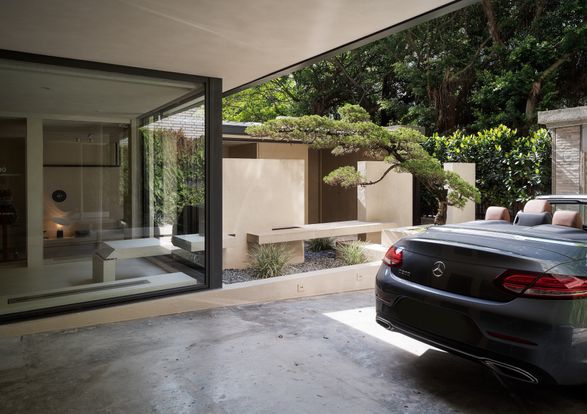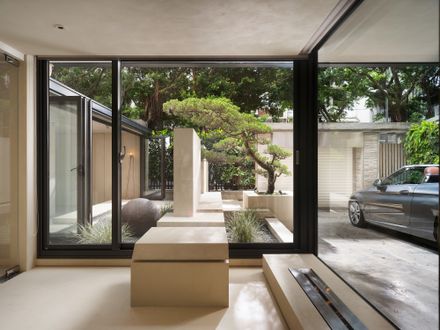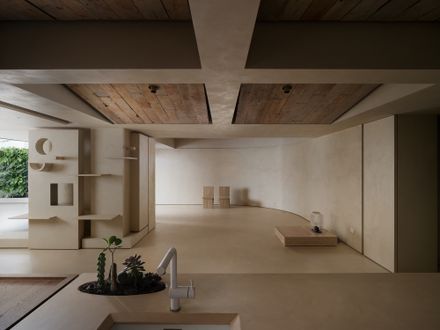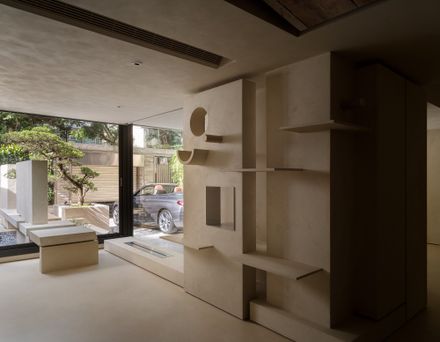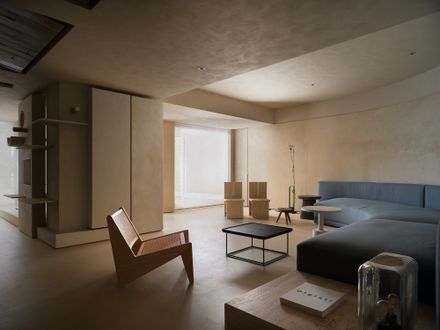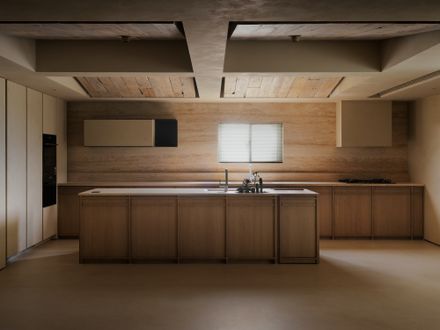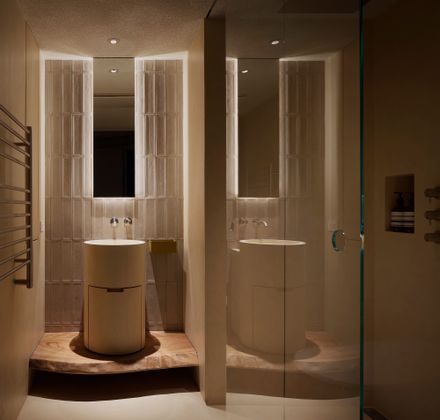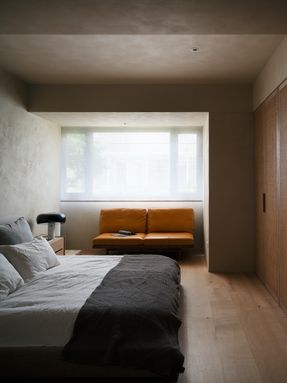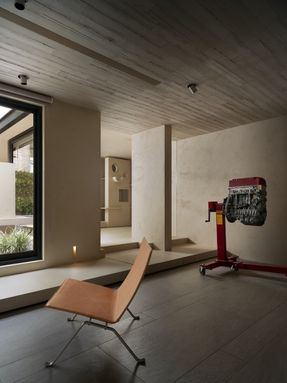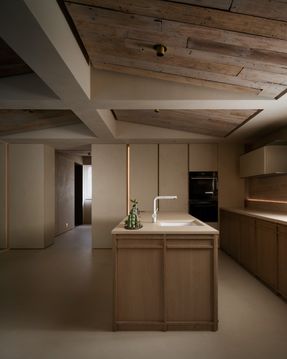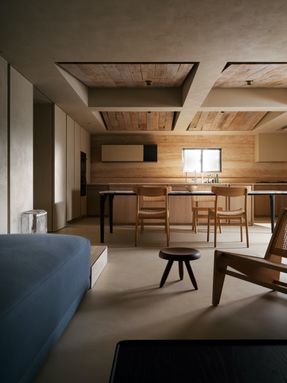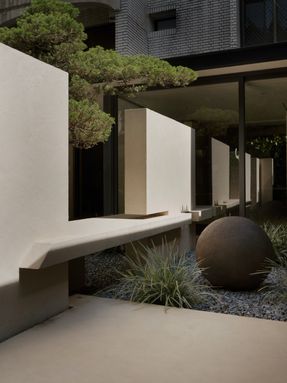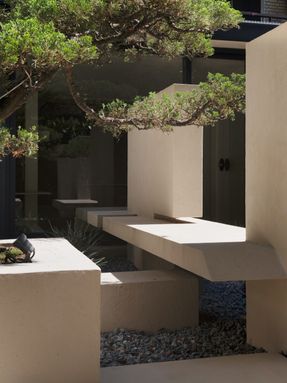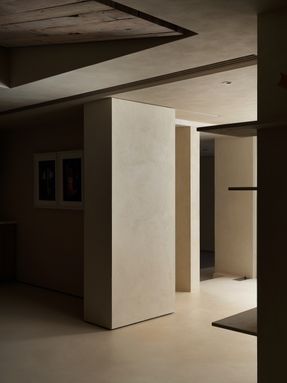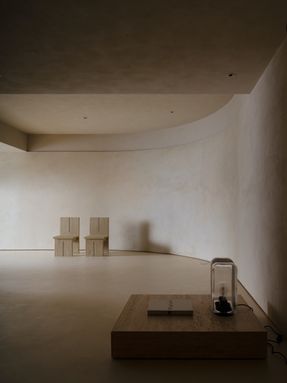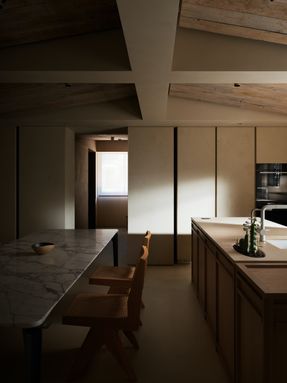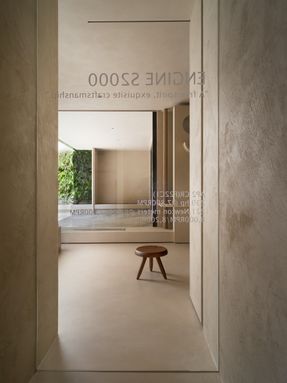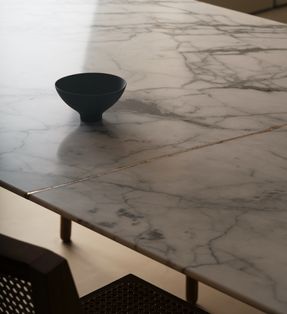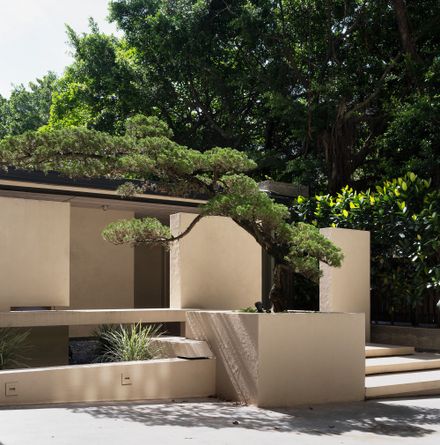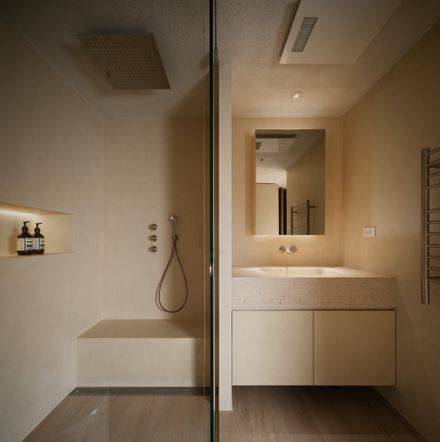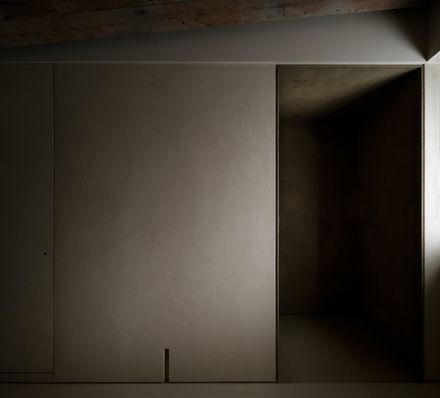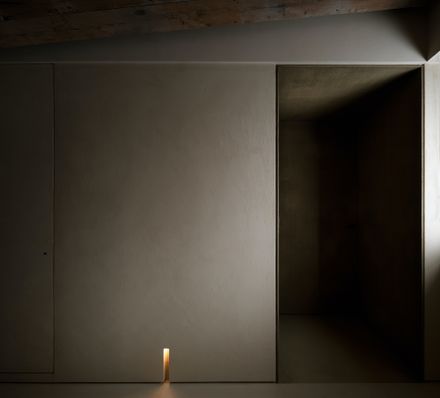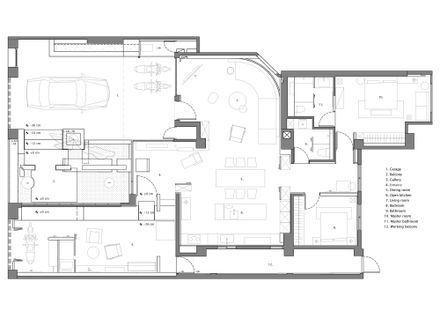
A New Journey Residence
ARCHITECTS
Wei Yi International Design Associates
DESIGNERS
Ferran Fang, Teresa Hong, Lucy Cheng
PHOTOGRAPHS
Wu,Kuo-Hao
AREA
155 m²
YEAR
2024
LOCATION
Taipei, Taiwan
CATEGORY
Houses, Renovation
Text description provided by architect.
Sheltered by the mature street trees adjacent to the property, the old residence stands as a rare sanctuary within the dense urban jungle.
Yet, this natural advantage also concealed an underlying issue: due to the constant shading from the trees, parts of the garden suffered from insufficient sunlight, resulting in sparse and struggling vegetation.
Additionally, the original layout, which featured only a single entry point, presented a functional drawback—visitors had to pass through the elder resident's private living area, disrupting their daily life. Consequently, reconfiguring the circulation system became a key aspect of the renovation.
In the revised circulation plan, two separate entryways were introduced. One preserves the elder's familiar route, while the other serves as a dedicated entrance for guests.
A moderately scaled structural wall was inserted across the original garden, subtly dividing the landscape and creating a more private garden vista for the interior.
The floating pathway leading to the new guest entrance was strategically placed in the area previously plagued by poor sunlight, resolving the vegetation issue and reactivating the underutilized garden zone. This reconfiguration also ensures that guest access no longer intrudes upon the elder's living space.
The new entrance leads to a redesigned reception area, formerly a storage room disconnected from the main living quarters.
Through thoughtful planning, this space now functions as a semi-independent social area, clearly defining public and private zones, while allowing seamless connection when needed.
Within the main interior, a non-removable T-shaped beam once created a sense of spatial compression.
To address this, a series of additional beams were introduced to form a grid pattern reminiscent of the Chinese character "田" (field).
A sloped ceiling was inserted within this frame, evoking the silhouette of a traditional pitched roof. This intervention not only lifted the perceived ceiling height but also became a visual focal point within the space.
Considering the elder as the primary resident, the color palette was intentionally muted and warm, featuring Belgian-imported paints in soft grey tones.
The sloped ceiling is finished with reclaimed cypress wood, subtly evoking the client's childhood memories of life in a military dependents' village.


